Il y a 7 fiches.
③ Ingrédient
Bio-inspired Artificial Intelligence
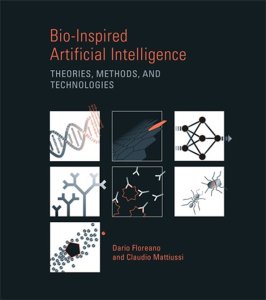
Theories, Methods, and Technologies
③ Ingrédient
Bio-inspired Artificial Intelligence
Dario Floreano, Claudio Mattiussi
"A comprehensive introduction to new approaches in artificial intelligence and robotics that are inspired by self-organizing biological processes and structures.
New approaches to artificial intelligence spring from the idea that intelligence emerges as much from cells, bodies, and societies as it does from evolution, development, and learning. Traditionally, artificial intelligence has been concerned with reproducing the abilities of human brains; newer approaches take inspiration from a wider range of biological structures that that are capable of autonomous self-organization. [...]"
"A comprehensive introduction to new approaches in artificial intelligence and robotics that are inspired by self-organizing biological processes and structures.
New approaches to artificial intelligence spring from the idea that intelligence emerges as much from cells, bodies, and societies as it does from evolution, development, and learning. Traditionally, artificial intelligence has been concerned with reproducing the abilities of human brains; newer approaches take inspiration from a wider range of biological structures that that are capable of autonomous self-organization. [...]"
③ Ingrédient
Human Information Interaction
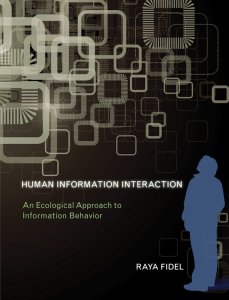
An Ecological Approach to Information Behavior
③ Ingrédient
Human Information Interaction
"Human information interaction (HII) is an emerging area of study that investigates how people interact with information; its subfield human information behavior (HIB) is a flourishing, active discipline. Yet despite their obvious relevance to the design of information systems, these research areas have had almost no impact on systems design. One issue may be the contextual complexity of human interaction with information; another may be the difficulty in translating real-life and unstructured HII complexity into formal, linear structures necessary for systems design. [...]"
③ Ingrédient
Cyberspace
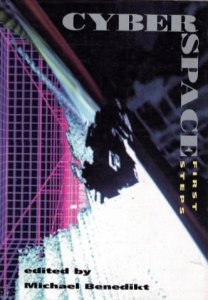
First steps
③ Ingrédient
Cyberspace
"Cyberspace has been defined as « an infinite artificial world where humans navigate in information-based space » and as « the ultimate computer-human interface. » However one defines it, this « virtual reality » is clearly both the strangest and most radically innovative of today's computer developments. These original contributions take up the philosophical basis for cyberspace in ancient thought, the relevance of the body in virtual realities, basic communications principles for cyberspace, the coming dematerialization of architecture, the logic of graphic representation into the third dimension, the design of a noncentralized system for multiparticipant cyberspaces, the ramifications of cyberspace for future workplaces, and a great deal more."
③ Ingrédient
Sound Art
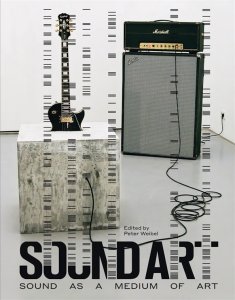
Sound as a Medium of Art
③ Ingrédient
Sound Art
"Essays and images that map art's new sonic cosmos, illustrated in color throughout.
This milestone volume maps fifty years of artists' engagement with sound. Since the beginning of the new millennium, numerous historical and critical works have established sound art as an artistic genre in its own right, with an accepted genealogy that begins with Futurism, Dada, and Fluxus, as well as disciplinary classifications that effectively restrict artistic practice to particular tools and venues. This book, companion volume to a massive exhibition at ZKM | Karlsruhe, goes beyond these established disciplinary divides to chart the evolution and the full potential of sound as a medium of art. [...]"
This milestone volume maps fifty years of artists' engagement with sound. Since the beginning of the new millennium, numerous historical and critical works have established sound art as an artistic genre in its own right, with an accepted genealogy that begins with Futurism, Dada, and Fluxus, as well as disciplinary classifications that effectively restrict artistic practice to particular tools and venues. This book, companion volume to a massive exhibition at ZKM | Karlsruhe, goes beyond these established disciplinary divides to chart the evolution and the full potential of sound as a medium of art. [...]"
③ Ingrédient
Processing
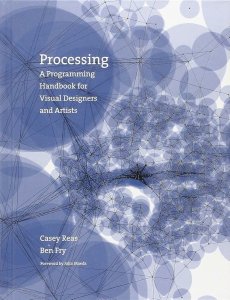
A Programming Handbook for Visual Designers and Artists
③ Ingrédient
Processing
Casey Reas, Ben Fry
Foreword : John Maeda
Foreword : John Maeda
- https://github.com/Hoalq-0026/Books/blob/master/Processing%20-%20A%20Programming%20Handbook%20for%20Visual%20Designers%20and%20Artists-MIT%20Press-200709.pdf
③ Ingrédient
The Stuff of Bits
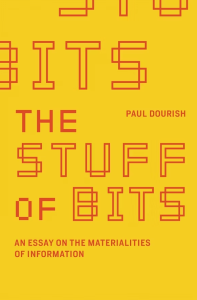
An essay on the materialities of information
③ Ingrédient
The Stuff of Bits
"An argument that the material arrangements of information — how it is represented and interpreted — matter significantly for our experience of information and information systems.
Virtual entities that populate our digital experience, like e-books, virtual worlds, and online stores, are backed by the large-scale physical infrastructures of server farms, fiber optic cables, power plants, and microwave links. But another domain of material constraints also shapes digital living: the digital representations sketched on whiteboards, encoded into software, stored in databases, loaded into computer memory, and transmitted on networks. [...]"
Virtual entities that populate our digital experience, like e-books, virtual worlds, and online stores, are backed by the large-scale physical infrastructures of server farms, fiber optic cables, power plants, and microwave links. But another domain of material constraints also shapes digital living: the digital representations sketched on whiteboards, encoded into software, stored in databases, loaded into computer memory, and transmitted on networks. [...]"
③ Ingrédient
The discipline of organizing
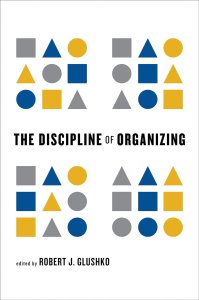
③ Ingrédient
The discipline of organizing
"A framework for the theory and practice of organizing that integrates the concepts and methods of information organization and information retrieval.
Organizing is such a common activity that we often do it without thinking much about it. In our daily lives we organize physical things—books on shelves, cutlery in kitchen drawers—and digital things—Web pages, MP3 files, scientific datasets. Millions of people create and browse Web sites, blog, tag, tweet, and upload and download content of all media types without thinking “I'm organizing now” or “I'm retrieving now.” [...]"
Organizing is such a common activity that we often do it without thinking much about it. In our daily lives we organize physical things—books on shelves, cutlery in kitchen drawers—and digital things—Web pages, MP3 files, scientific datasets. Millions of people create and browse Web sites, blog, tag, tweet, and upload and download content of all media types without thinking “I'm organizing now” or “I'm retrieving now.” [...]"

